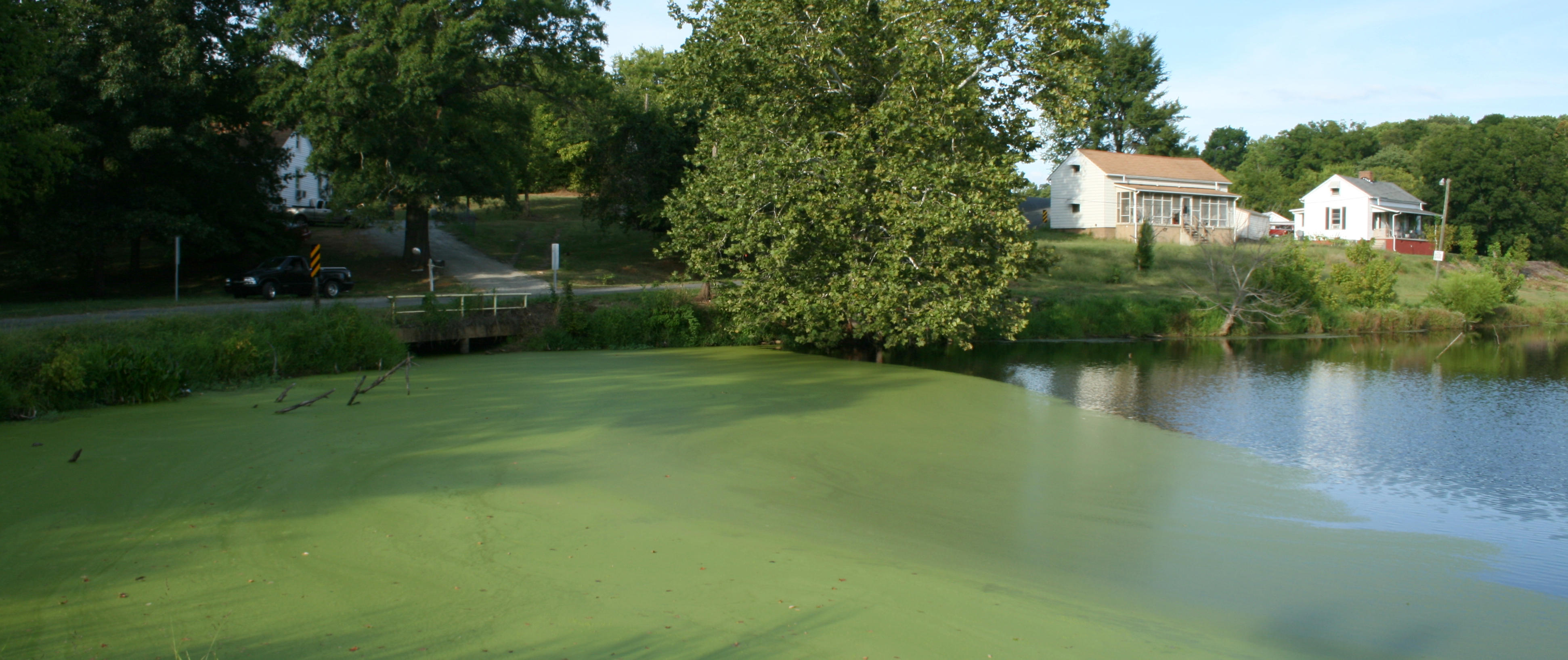To ensure you’re receiving the most up-to-date and accurate information, please choose the correct agency from the homepage. The DHEC website is no longer being updated and will be permanently unavailable Dec. 31, 2024.
Harmful Algal Bloom Monitoring App
Statewide monitoring stations, as well as advisories and watches, can now be viewed on our new GIS Harmful Algal Bloom Monitoring App. Simply click on a highlighted waterbody to learn more about advisories/watches at that location or use the search feature to locate specific waterbodies on the map. The "About" pop-up provides more guidance on what advisories are as well as additional resources for more information.
What is a Harmful Algal Bloom?
Algae and cyanobacteria are tiny plant-like organisms that, under the right conditions, can overgrow in rivers, lakes, and oceans. This rapid growth is called an algal bloom and can be associated with foam, scum, or thick layers of algae on the surface of water. Algal blooms can look and smell bad and may cause the water to appear green, red, brown, or blue in color; however, algal blooms can't always be seen. Some algal blooms are formed by species that can produce toxins. When they contain toxins that affect the health of people, animals, and the environment, they are known as harmful algal blooms (HABs).
What Causes Harmful Algal Blooms?
The major factors influencing the growth and reproduction of cyanobacteria are light, temperature, and nutrients.
In order for HABs to grow and form they need:
- Sunlight
- Slow-moving water
- Nutrients (nitrogen and phosphorus)
- Relatively warm water temperature
HABs are more likely to occur in late spring to early fall when water temperatures are relatively high and less likely to occur in winter months.
Nutrient pollution can make algal blooms worse, resulting in more frequent and more severe blooms.
How are Algal Blooms Harmful?
You can’t tell if a bloom is harmful just by looking at it, and not all blooms are easy to see. People or pets can get sick when they have contact with a harmful algal bloom by:
- Swimming, kayaking, fishing, or wading through water
- Breathing in tiny water droplets or mist that contains algal toxins
- Drinking water affected by a harmful algal bloom
- Eating seafood (fish or shellfish) affected by a harmful algal bloom
The EPA has developed health advisories (HA) for the cyanotoxins, cylindrospermopsin and microcystin in drinking and recreational water.
South Carolina has adopted the recreational health advisories for these cyanotoxins into the State Ambient Water Quality Monitoring Plan. The drinking water advisories are used as technical guidance.
DHEC is currently aware of an extensive bloom of Lyngbya wollei that is located in multiple areas on Lake Wateree. This algae produces a mat of material on the bottom of the lake that can float to the surface, and it's been found to be thickest in the shallower coves of the lake. Currently there are no exceedances of the State algal toxin standards.
Lyngbya has been proven to produce toxins, but most of the scientific literature is still up to debate on whether it causes issues via contact, ingestion or inhalation. Some people have reported swimmer's itch and irritation with contact of the Lyngbya, so it's not recommended for people or pets to swim in or near these algal mats.
If your pet experiences any of the symptoms listed below after coming into contact with a body of water, please consult with your veterinarian.
- Physical: hypersalivation, weakness, labored breathing, seizures, other neurologic symptoms
- Chemical: elevated liver enzymes, low blood sugar, low protein, abnormal coagulation
Recreational Health Advisories
| Microcystins | Cylindrospermopsin |
|---|---|
| 8 µg/L | 15 µg/L |
* µg/L = micrograms per liter, or parts per billion
Contact
Questions about harmful algal blooms can be directed to Emily Bores at:
803-898-8374
boreseb@dhec.sc.gov
